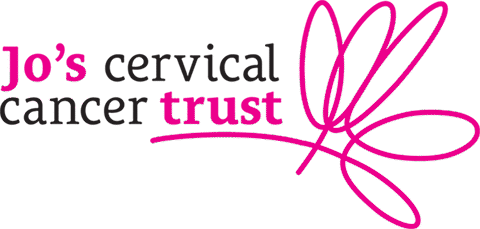About cervical cell changes
Last modified: 20 May 2025, 19:58
Your colposcopy results may show cell changes (abnormal cells) on your cervix. Types of cell changes include CIN and CGIN.
On this page, we talk through the differences between different types of cell changes, and try to explain some of the words you might read or hear. We hope it helps you feel more reassured, but if you need some extra support, our support services may be able to help.
What are cell changes?
Cervical cell changes happen when cells don’t behave in an expected way.
Your results letter or healthcare professional might use the terms abnormal cells or cervical abnormalities. This is just another way of saying cell changes.
At Jo’s, we usually use the term cell changes rather than abnormal cells or cervical abnormalities. This is because the people we speak to, who have had cell changes, have told us that they prefer this term.
Finding out you have cell changes may be worrying, especially if you haven’t heard of CIN or CGIN before. Try to remember that cell changes are not cervical cancer and having them does not mean you will develop cervical cancer. Most cell changes will get better by themselves or with treatment.
“A doctor once described cell changes to me like an army of soldiers (your cells) marching along, then one or a few soldiers decide to march in their own direction.”
– Roberta, one of our Jo’s Voices volunteers
CIN stands for cervical intraepithelial neoplasia. CIN is named after the parts of the cervix it affects, which are the squamous cells on the outer surface. It is the most common type of cell changes.
It is important to know that CIN is not cervical cancer. CIN may be monitored or treated, depending on the grade and your personal situation.
Read about monitoring or treatment >
How is CIN graded?
CIN is graded from 1 to 3. The number shows how deep the cell changes go into the outer surface of the cervix. Sometimes, the terms low grade or high grade are also used.
CIN1 (low grade)
Cell changes are one-third deep into the outer surface of the cervix.
CIN1 is usually monitored, instead of being treated. This is because, in most cases, CIN1 will naturally regress to ‘normal’ cells.
Read more about monitoring and treating CIN >
CGIN
CGIN stands for cervical glandular intraepithelial neoplasia. CGIN is named after the parts of the cervix it affects, which are the glandular cells inside the cervical canal.
It is important to know that CGIN is not cervical cancer. You will usually be offered treatment for CGIN. This is because glandular cells are inside the cervical canal, which means that they cannot be seen or monitored as easily.
Read about monitoring or treatment >
How is CGIN graded?
CGIN is usually described as:
low grade
high grade.
If you have any grade of CGIN, you will be offered treatment.
SMILE
CIN is the most common type of cell changes, with CGIN being the second most common. But there are other types of cell changes you can have, including SMILE.
SMILE stands for stratified mucin-producing intraepithelial lesion. It is thought of and treated in a similar way to CGIN. However, it is much rarer.
If you have questions about SMILE, or any other type of cell changes, it is best to speak with your colposcopy team.
Will cell changes develop into cervical cancer?
With the right management, the risk of cell changes developing into cervical cancer is low. Most cell changes do not develop into cervical cancer.
Because most cases of CIN3 and CGIN are treated, we don’t have much data on how likely they are to progress into cervical cancer or regress back to ‘normal’ cells. The numbers given in the table below are estimates and based on the best studies we currently have (see references for more details).
About cervical cell changes
Your colposcopy results may show cell changes (abnormal cells) on your cervix. Types of cell changes include CIN and CGIN.
On this page, we talk through the differences between different types of cell changes, and try to explain some of the words you might read or hear. We hope it helps you feel more reassured, but if you need some extra support, our support services may be able to help.
What are cell changes?
Cervical cell changes happen when cells don’t behave in an expected way.
Your results letter or healthcare professional might use the terms abnormal cells or cervical abnormalities. This is just another way of saying cell changes.
At Jo’s, we usually use the term cell changes rather than abnormal cells or cervical abnormalities. This is because the people we speak to, who have had cell changes, have told us that they prefer this term.
Finding out you have cell changes may be worrying, especially if you haven’t heard of CIN or CGIN before. Try to remember that cell changes are not cervical cancer and having them does not mean you will develop cervical cancer. Most cell changes will get better by themselves or with treatment.
“A doctor once described cell changes to me like an army of soldiers (your cells) marching along, then one or a few soldiers decide to march in their own direction.”
– Roberta, one of our Jo’s Voices volunteers
low grade
high grade.
If you have any grade of CGIN, you will be offered treatment.
The likelihood of progression or regression depends on your personal situation, including factors like:
Are cell changes the same as pre-cancerous cells?
Is dyskaryosis the same as CIN or CGIN?
What other words or phrases are used to describe cell changes?
How we can help
The most important thing to remember is that CIN and CGIN are not cervical cancer, and that you will have a team of dedicated experts caring for you. But we know it can still feel scary to get a cell changes result.
If you need some extra support, you can give our free Helpline a call on 0808 802 8000. Our trained volunteers can talk through the different pathways or simply listen to how you’re feeling.
Check the opening hours >
Sometimes connecting with others who have gone through a similar experience can be helpful. Our online Forum lets our community give and get support. You can read through the messages or post your own – whichever feels most comfortable.
83% of
women feel less worried after calling our
Helpline.
Help us keep our
vital support services running by
donating Ł20 to fund a call to our
Helpline.
What happens after cervical screening?
>
Find out how
cervical screening samples are
tested.

We’re here for you
Talk to someone
about how you’re feeling, or connect
with others on our Forum.


